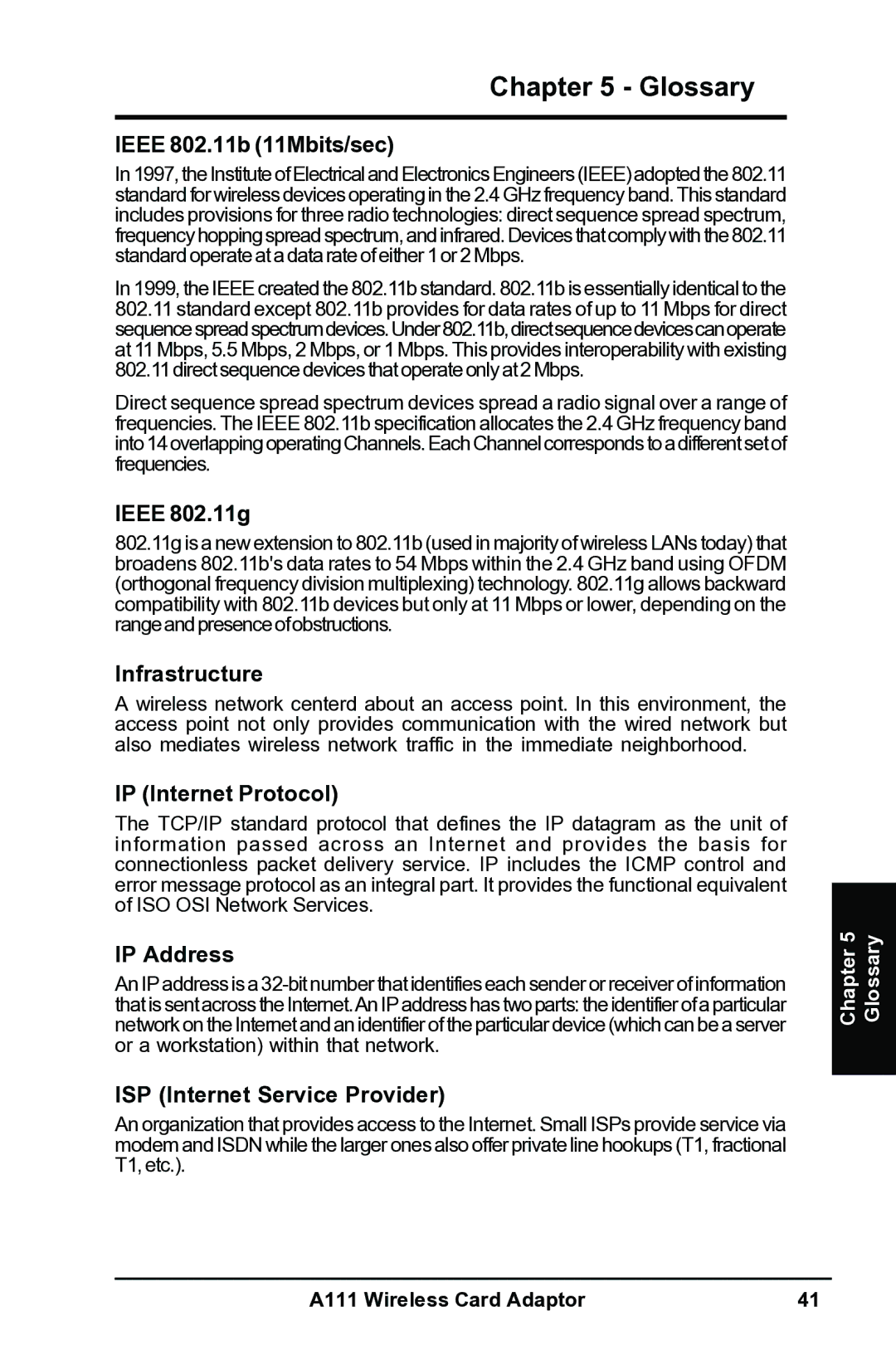
Chapter 5 - Glossary
IEEE 802.11b (11Mbits/sec)
In1997,theInstituteofElectricalandElectronicsEngineers(IEEE)adoptedthe802.11 standard for wireless devices operating in the 2.4 GHz frequency band.This standard includes provisions for three radio technologies: direct sequence spread spectrum, frequencyhoppingspreadspectrum,andinfrared.Devicesthatcomplywiththe802.11 standard operate at a data rate of either 1 or 2 Mbps.
In 1999, the IEEE created the 802.11b standard. 802.11b is essentially identical to the
802.11standard except 802.11b provides for data rates of up to 11 Mbps for direct sequencespreadspectrumdevices.Under802.11b,directsequencedevicescanoperate at 11 Mbps, 5.5 Mbps, 2 Mbps, or 1 Mbps. This provides interoperability with existing
802.11directsequencedevicesthatoperateonlyat2Mbps.
Direct sequence spread spectrum devices spread a radio signal over a range of frequencies. The IEEE 802.11b specification allocates the 2.4 GHz frequency band into14overlappingoperatingChannels.EachChannelcorrespondstoadifferentsetof frequencies.
IEEE 802.11g
802.11g is a new extension to 802.11b (used in majority of wireless LANs today) that broadens 802.11b's data rates to 54 Mbps within the 2.4 GHz band using OFDM (orthogonal frequency division multiplexing) technology. 802.11g allows backward compatibility with 802.11b devices but only at 11 Mbps or lower, depending on the rangeandpresenceofobstructions.
Infrastructure
A wireless network centerd about an access point. In this environment, the access point not only provides communication with the wired network but also mediates wireless network traffic in the immediate neighborhood.
IP (Internet Protocol)
The TCP/IP standard protocol that defines the IP datagram as the unit of information passed across an Internet and provides the basis for connectionless packet delivery service. IP includes the ICMP control and error message protocol as an integral part. It provides the functional equivalent of ISO OSI Network Services.
IP Address
An IP address is a
ISP (Internet Service Provider)
An organization that provides access to the Internet. Small ISPs provide service via modem and ISDN while the larger ones also offer private line hookups (T1, fractional T1, etc.).
Chapter 5 Glossary
A111 Wireless Card Adaptor | 41 |
